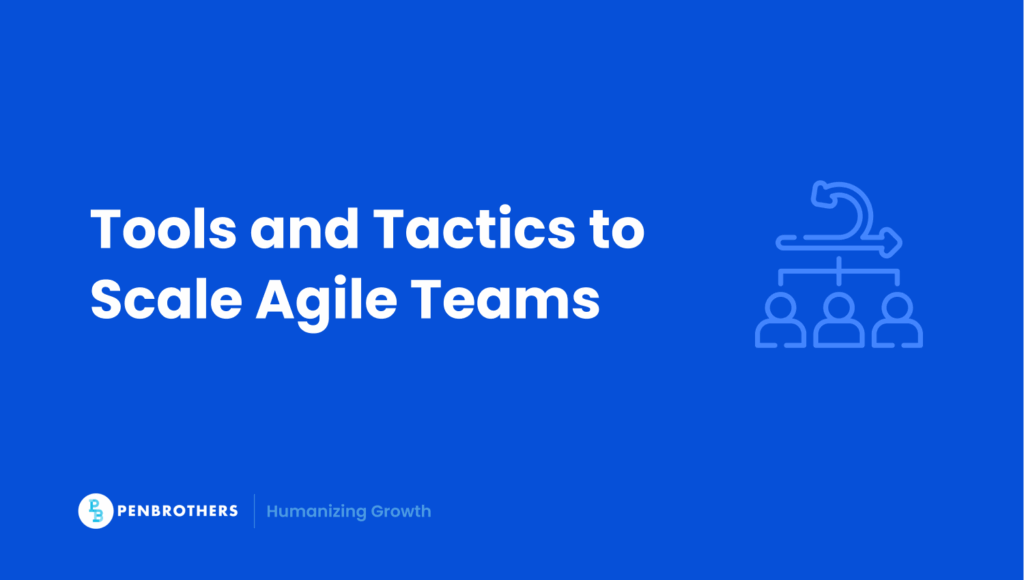Key Takeaways
- Agile needs a digital core. You can’t scale agile without modern, integrated systems supporting it.
- Infrastructure drives speed. Cloud, microservices, and CI/CD remove blockers and accelerate delivery.
- Teams must operate as one. Cross-functional squads with shared KPIs ship faster and align better.
- The tech stack is the foundation. Modern DevOps, data platforms, and automation enable scalable agility.
- Culture is the real limiter. Legacy systems, rigid policies, and resistance stall transformation more than tools do.
You’ve adopted agile frameworks and trained your squads, yet velocity is flat and cross-team collaboration lags. The problem? Agile alone can’t scale across siloed systems and global teams. To see how these shifts affect modern operations, explore the latest emerging outsourcing trends.
Digital Transformation: The Operating System for Scaling Agile
Digital transformation isn’t just cloud migration or AI hype. Done right, it acts as the foundation for scaling agile practices across teams, geographies, and functions.
According to Product School, 34% of organizations now view agile as a key driver of digital transformation, not just a side effect of it. Why? Because agile transformation enables iterative execution while digital platforms enable that agility to scale.
The shift looks like this:
- From waterfall transformation to sprint-based change
- From top-down IT decisions to empowered cross-functional teams
- From disconnected systems to integrated, cloud-native platforms
When the infrastructure supports agility, think DevOps, automation, real-time feedback loops, teams stop fighting the system and start delivering faster.
Breaking the Bottlenecks: How Scalable Systems Unleash Speed
Let’s talk about infrastructure.
Without scalable systems, even the best agile teams run into bottlenecks. Deployment freezes, inconsistent environments, and opaque data flows kill momentum.
Scalable infrastructure removes those blockers by enabling:
- Elastic capacity through cloud services (e.g. AWS, Azure): Cloud platforms allow you to scale resources up or down in real time, whether that’s computing power, storage, or environments. This elasticity supports agile teams who need to test, deploy, and iterate without waiting for infrastructure provisioning or budget cycles. It also ensures consistent performance during spikes in traffic or release activity. Elastic capacity supports agile teams who need to test and iterate without waiting on provisioning. This is especially evident in IT outsourcing in Australia, where scalability drives business continuity.
- Resilient architectures using microservices and containerization: Instead of monolithic systems that break under change, microservices let you build, deploy, and scale individual components independently. Combined with containerization tools like Docker and Kubernetes, teams can experiment without jeopardizing core systems, enabling fast, safe iteration across services and geographies.
- CI/CD pipelines for continuous integration and deployment: Continuous integration ensures every code change is tested early. Continuous deployment automates delivery. Together, they shrink feedback loops and allow teams to release new features frequently, sometimes multiple times a day, without compromising stability or compliance.
- Real-time analytics that inform and adapt backlog priorities: Agile thrives on feedback. With integrated analytics platforms, teams can measure user behavior, feature adoption, and system performance as soon as updates go live. These insights feed directly into the backlog, guiding sprint planning and allowing prioritization to shift dynamically as data comes in.
Take Visa, for example. Their microservices architecture handles up to 65,000 transactions per second, scaling to demand without downtime. Netflix does the same with its autoscaling cloud infrastructure, ensuring smooth global content delivery. Microservices let you deploy independently and scale confidently. Modern software development outsourcing models are built around this exact principle.
What Scalable Agile Looks Like in Practice
Scaling agile isn’t just process, it’s ecosystem. Here’s what high-performing, digitally enabled agile teams look like:
- Cross-functional autonomy: Developers, QA engineers, product managers, and designers operate as one integrated unit, not in silos. These teams own the full lifecycle of a feature or product, from ideation to deployment. This autonomy accelerates decision-making, reduces handoffs, and increases accountability, which are all essential for agility at scale. High-performing teams operate as one integrated unit, not silos. Many top IT staffing companies use this exact model to speed up delivery.
- Test-driven, short release cycles: Releases happen weekly or even daily, not quarterly. Continuous Integration and Continuous Deployment (CI/CD) pipelines automate builds, tests, and releases, so teams can ship confidently and frequently. Automated testing ensures quality is baked into every commit, not checked at the end.
- Real-time feedback loops: Teams don’t wait for quarterly reports to adjust course. They use real-time analytics to monitor user behavior, performance metrics, and system health. Stakeholder feedback is also captured through collaborative tools like dashboards or sprint reviews. This continuous input allows backlogs to adapt dynamically, improving product-market fit with each sprint.
- Shared KPIs across business and tech: Agile at scale requires alignment beyond velocity charts. High-performing teams set shared KPIs that tie business outcomes to engineering work, from OKRs focused on user growth or retention, to sprint goals that track toward product launches or infrastructure upgrades. This alignment keeps everyone focused on delivering value, not just features.
- Unified toolchains: Instead of juggling disjointed systems, scalable agile teams operate with an integrated digital toolset. Tools like Jira (project tracking), GitLab (code collaboration), Slack (communication), and Figma (design) are connected, reducing context switching and increasing visibility. This digital cohesion is what keeps distributed teams aligned and productive.
To ensure success, organizational design also plays a role. If your org chart is still rigid and hierarchical, agile will always hit a ceiling. Learn why a flexible org chart is key to agility.
The Tech Stack That Makes It Possible
You can’t scale agility with outdated tech. Here’s what your modern digital backbone should include:
| Category | Enabling Technologies | Purpose |
| Cloud-Native Infrastructure | AWS, Azure, Kubernetes | Provides elastic compute and deployment environments for global scalability |
| DevOps & CI/CD | GitLab, Jenkins, Terraform | Automates builds, testing, and deployments to accelerate delivery cycles |
| Collaboration Tools | Jira, Confluence, Slack | Streamlines communication, documentation, and task management |
| Scalable Data Platforms | Databricks, Snowflake | Handles large-scale data processing and real-time analytics |
| AI/Automation Capabilities | RPA tools, predictive analytics engines | Enables smart decision-making and workflow automation |
Choosing between GitLab vs GitHub? Explore this comparison to see which tool better suits cross-functional DevOps workflows.
The goal: enable self-service delivery pipelines, real-time collaboration, and adaptive tooling that evolves with your teams.
Overcoming Common Scaling Pitfalls
Digital transformation at scale is messy. You’ll hit roadblocks like:
- Legacy systems
Outdated monolithic platforms often can’t support the fast, modular workflows agile demands. Teams waste time on workarounds instead of real delivery. - Tool sprawl
When every team uses a different toolset, Jira here, Trello there, undocumented APIs everywhere, visibility and consistency suffer. The result: slower onboarding, broken workflows, and siloed progress. - Compliance bottlenecks
In regulated industries like fintech or healthcare, governance requirements can paralyze iteration. Teams fear breaking the rules more than missing a sprint goal. - Executive resistance
Leaders may hesitate to fund or scale transformation initiatives due to perceived risks, cost overruns, or bad experiences with past digital projects. Cultural inertia can be stronger than technical debt. - Rigid HR policies
A surprising but real blocker: outdated PTO systems or approval workflows that disrupt sprint planning or restrict flexible work arrangements across time zones. Agility isn’t just about software, it’s about people.
Overcoming these requires more than just tooling. You need:
- Agile governance
Replace rigid controls with lightweight, sprint-aligned policies. Define just enough structure, security reviews, release gates, audit trails, to satisfy compliance without killing speed. - Prioritization frameworks
Use systems like MoSCoW or WSJF (Weighted Shortest Job First) to focus limited time and budget on initiatives with the highest impact. These frameworks help reduce debates and bias in prioritization discussions. - Cultural transformation
Equip your leaders to lead differently. Train executives and mid-level managers in agile values, not just terminology. Support them in shifting from command-and-control to servant leadership.
One overlooked blocker? Outdated PTO policies that restrict team flexibility. Rethink your time-off strategy to support modern workflows.
Final Thoughts
Agile helps you move fast. Digital transformation makes that speed sustainable. When embedded across systems, culture, and teams, it becomes the foundation for scaling agile effectively.
The key? You don’t scale agile after digital transformation, you scale agile through it.
Need a team that’s built for this kind of scale? Penbrothers provides dedicated teams that integrate seamlessly and deliver with speed. Let’s build smarter, together.
Frequently Asked Questions (FAQs)
Adopting agile improves how individual teams work. Scaling agile aligns multiple teams, systems, and workflows so the entire organization delivers faster and more consistently.
It standardizes tools, automates compliance, and creates shared visibility, reducing the inconsistency and technical bottlenecks that slow multi-team execution.
Shorter cycle times, more frequent deployments, smoother handoffs, and clearer alignment between engineering output and business goals are strong indicators.
Rigid hierarchies slow decisions. Cross-functional, empowered teams move faster and avoid the delays caused by traditional approval chains.
Asynchronous workflows, shared digital workspaces, and integrated communication tools help distributed teams collaborate without meeting overload.






